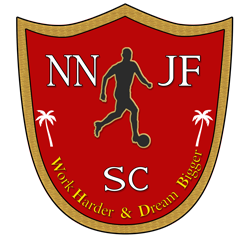The Importance of Physical Conditioning
The Importance of Physical Conditioning
Introduction
Physical conditioning is the cornerstone of soccer performance, providing the foundation upon which technical skills, tactical awareness, and mental resilience are built. At NNJF SC Soccer Club Academy, we emphasize the significance of maintaining peak physical condition to excel on the field. Whether you are an aspiring player or a seasoned professional, understanding and implementing effective physical conditioning practices is essential. This article explores the importance of physical conditioning and provides practical guidance for optimizing your fitness for soccer.
The Importance of Physical Conditioning
- Enhanced Performance
Superior physical conditioning enhances your ability to perform consistently at a high level throughout the match. Improved strength, speed, agility, and endurance enable you to execute technical skills more effectively and sustain high-intensity efforts.
- Injury Prevention
Proper physical conditioning reduces the risk of injuries. Strengthening muscles, improving flexibility, and maintaining overall fitness help protect against common soccer injuries such as sprains, strains, and overuse injuries.
- Faster Recovery
Well-conditioned players recover more quickly from intense training sessions and matches. Efficient recovery ensures you can maintain high performance levels over a grueling season and reduces the likelihood of fatigue-related injuries.
- Mental Toughness
Physical fitness contributes to mental toughness. The ability to push through physical challenges on the field translates to greater mental resilience, focus, and determination during crucial moments of the game.
- Tactical Execution
High levels of fitness enable you to execute tactical strategies more effectively. Whether it’s pressing aggressively, making repeated runs, or maintaining defensive shape, physical conditioning supports your ability to fulfill tactical roles.
Practical Guidance for Optimizing Physical Conditioning
- Comprehensive Fitness Plan
Develop a comprehensive fitness plan that includes strength training, cardiovascular conditioning, agility drills, and flexibility exercises. A well-rounded approach ensures all aspects of your physical fitness are addressed.
- Strength Training
Incorporate strength training exercises to build muscle mass and improve overall power. Focus on compound movements such as squats, deadlifts, lunges, and push-ups, which target multiple muscle groups and enhance functional strength.
- Cardiovascular Conditioning
Soccer requires both aerobic and anaerobic endurance. Incorporate a mix of long-distance runs, interval training, and high-intensity sprints to build cardiovascular endurance and improve your ability to sustain high-intensity efforts.
- Agility and Speed Drills
Practice agility and speed drills to enhance your quickness and change of direction. Cone drills, ladder drills, and shuttle runs improve your footwork, reaction time, and overall speed on the field.
- Flexibility and Mobility
Regular stretching and mobility exercises improve flexibility and joint health. Incorporate dynamic stretches before training and matches to prepare your body for action, and static stretches after to aid in recovery.
- Injury Prevention Exercises
Include exercises specifically designed to prevent injuries. Focus on strengthening stabilizing muscles, improving balance, and addressing any muscle imbalances. Exercises such as single-leg squats, planks, and resistance band work can be beneficial.
- Nutrition and Hydration
Proper nutrition and hydration are vital for maintaining physical conditioning. Fuel your body with a balanced diet rich in carbohydrates, proteins, fats, vitamins, and minerals. Stay hydrated by drinking plenty of water before, during, and after training and matches.
- Rest and Recovery
Allow adequate time for rest and recovery to prevent overtraining and burnout. Ensure you get enough sleep, incorporate rest days into your training schedule, and use recovery techniques such as ice baths, massages, and foam rolling.
- Monitoring and Adaptation
Regularly monitor your fitness levels and adjust your training plan as needed. Use fitness assessments, such as VO2 max tests, strength benchmarks, and agility tests, to track your progress and make informed adjustments to your regimen.
- Mental Conditioning
Physical conditioning goes hand-in-hand with mental conditioning. Practice mental training techniques such as visualization, goal setting, and mindfulness to enhance your focus, confidence, and overall mental resilience.
Conclusion
At NNJF SC Soccer Club Academy, we believe that optimal physical conditioning is essential for soccer excellence. By developing a comprehensive fitness plan, focusing on strength, endurance, agility, and flexibility, and prioritizing injury prevention and recovery, you can achieve peak performance on the field. Whether you’re an aspiring player or a seasoned professional, remember that physical conditioning is a continuous journey requiring dedication, consistency, and a holistic approach. Embrace these principles, and watch as your physical prowess elevates your game to new heights.
